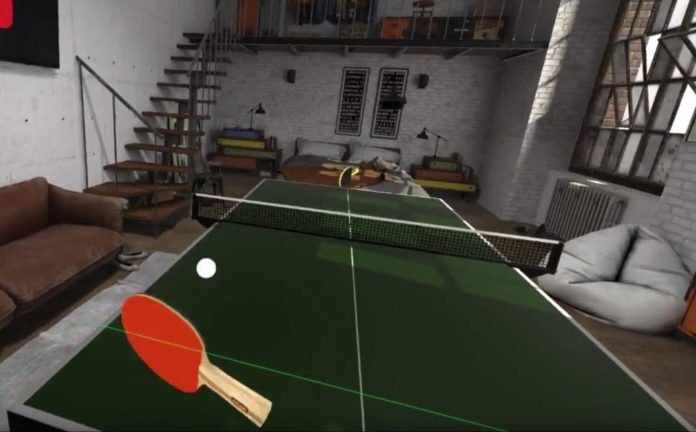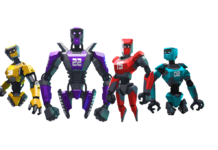Table tennis courts are everywhere. They’re in your local sports bar, your office breakroom, and in the basement of your friend’s house from college. If you’ve ever entered a room containing one, this story might be relatable: You’ve tried (possibly more than once) to ping the pong with your friends and co-workers, but no matter what you do, you almost always lose.
“I’d beat these jerkbags if only I could get a few extra practice rounds in!”, you think to yourself as you continue to not catch a break while your beloved workplace colleagues and/or younger family members dominate and subsequently forget about you.
Maybe you own a table, but you don’t have anybody to practice at home with. Or you don’t even have space in your home to store a table. Either way, you don’t get to play table tennis as often as you’d like, and you keep getting beaten by those l̶o̶s̶e̶r̶s̶ other respectable humans who are impossibly good at dragging your pride through the mud.
No more! Eleven: Table Tennis, by Fun Labs, is the most life-like table tennis simulator you’ll find in VR. It’s currently exclusive to the Oculus Rift and HTC Vive, but there is a PSVR version on the way.
Are you ready to vanquish your foes and become a watercooler legend? Yes, of course you are. In this article, I will explain to you why Eleven: Table Tennis is the must-have VR game for you. Let’s get started:
Eleven: Table Tennis Improves Your Hand-Eye Coordination
Hand-eye coordination can be defined as your ability to act on what you see. This might be common knowledge, but it’s important to get a refresher in the context of table tennis.
In table tennis, as in many sports, the goal is to keep your eye on the ball and determine where the ball is going to be next. And then you have to be ready to make the exact move necessary to engage the ball and counter your opponent. If you can’t do that, you might as well run around the court flailing your arms.
You can build your general hand-eye coordination in any VR game—most, if not all VR games force you to use your hands to interact with objects in your virtual environment. What makes Eleven: Table Tennis special is that it replicates an actual table tennis court, with another virtual player (either real or AI) positioned against you at all times.
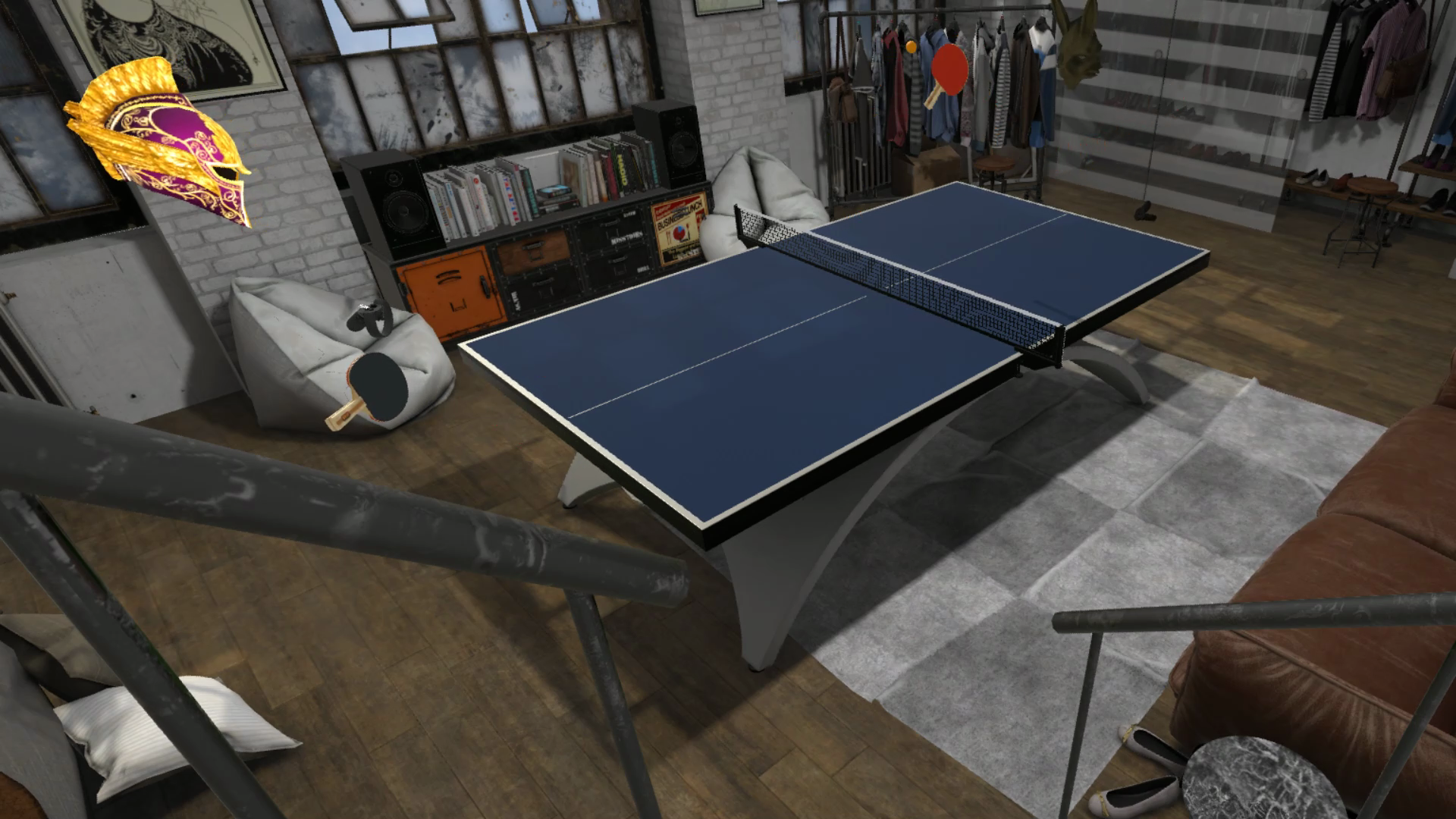
There are other table tennis games, sure, and they each have their own hook. But the brilliance of Eleven: Table Tennis is that it feels—and plays—like a perfectly replicated game of table tennis.
The game’s phenomenal simulation of paddle and ball physics are where all of the game’s development time has been focused. And it shows.
When you play often, you will build a mental map of all the different ways a real ping-pong ball might come at you. The game is so life-like that you’ll remember everything you learn while playing, so your eye will be able to follow the ball better when you play in real life.
You’ll also have the advantage of improved muscle memory from learning and executing all the serves and counters—over and over—in VR. And while your peers won’t ever teach you about paddle spin or speed control, Eleven will.
It Can Be a Great Low-Intensity Workout
It’s one of those games where you’re constantly on your feet and moving, but you aren’t doing anything that pushes you to your maximum. Granted, that’s a function of how well-matched you are with your virtual opponent.
If you’re faced against a much more talented opponent and you try to keep up with them, then you’re naturally going to burn extra calories and push your heart rate. But “keeping up” in table tennis is reactive.
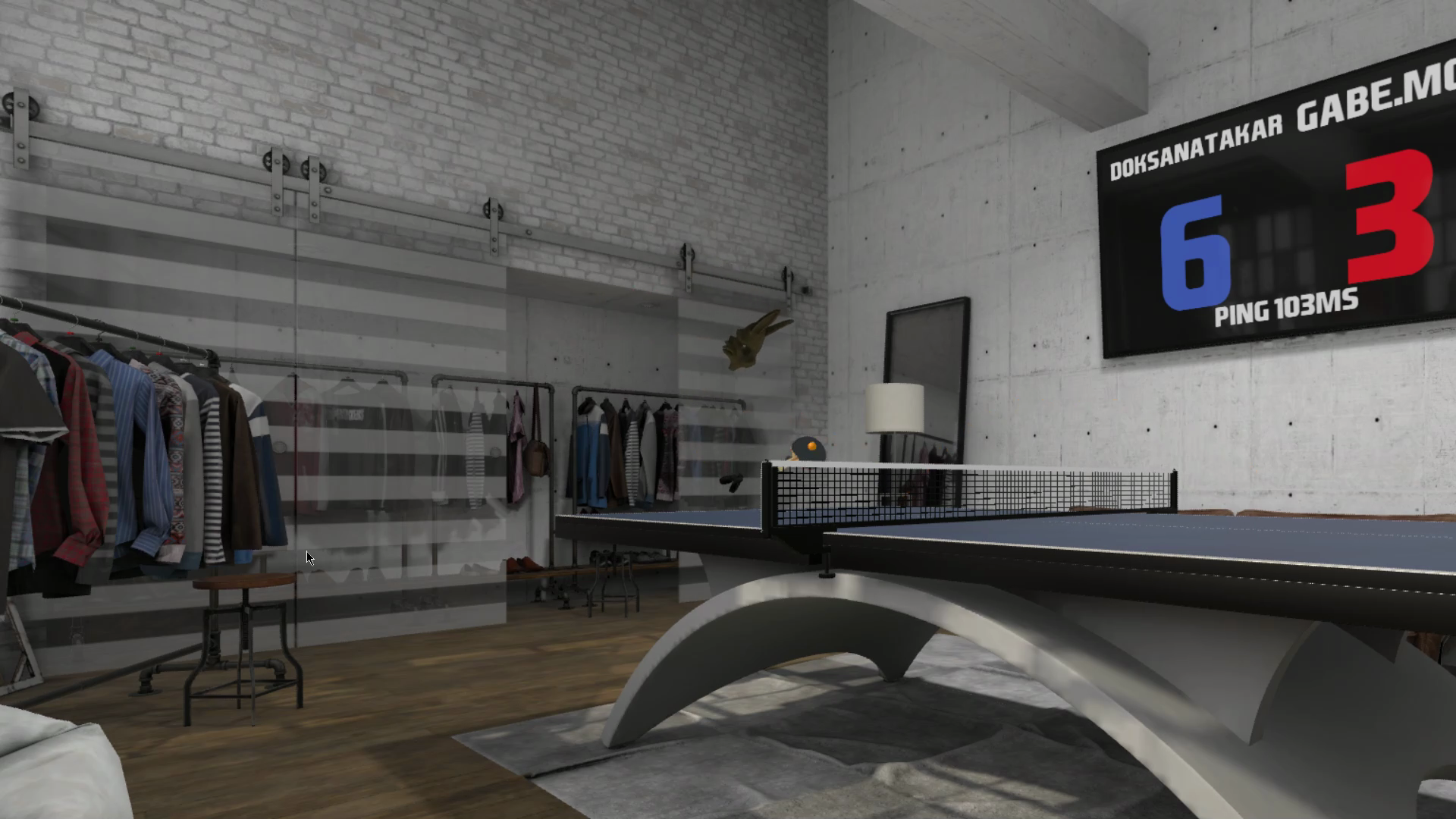
Table tennis is a game that rewards patience and proactivity. So for the most part, you won’t push your body to its maximum while playing Eleven: Table Tennis. This is nice because ideally you’ll be having fun and you won’t notice that you’re getting light exercise while you play.
For more information on the benefit of low-intensity exercise, check out my article comparing HIIT against LISS.
It Saves You Time, Money and Space
Table tennis courts can be expensive. At the low end, you’re looking at around $200 for a table and some paddles. At the high end, you’re shopping for tables in the $1,000+ range.
If you already have a VR system for workouts and gaming, then you’re $20 away—the cost of a copy of Eleven: Table Tennis—from as much ping-pong as your heart desires. And that benefit compounds when you have a tiny or crowded apartment, where you could not fit a ping-pong table without discarding your sofa.
Assuming you keep your VR hooked up at all times, you won’t have to hassle with that.
And as long as you have at least 2×2 meters to play VR games in, space will not be a problem with Eleven: Table Tennis.
There’s Always Somebody to Play With
This is the kicker for me. What if you have a ping-pong table at home, but you’re the only person who wants to play? Maybe your roommates or significant other have been “meaning” to catch up with a few rounds of table tennis, but they’re “too busy”. You just want to spend hours getting good—and nobody else is patient enough to stand there with you while you train, which is a common problem.
This is a non-issue with Eleven: Table Tennis because the game’s AI is always available for you. You can set AI difficulty settings between Amateur, Semi-Pro, Professional, World-Class, and Legendary.
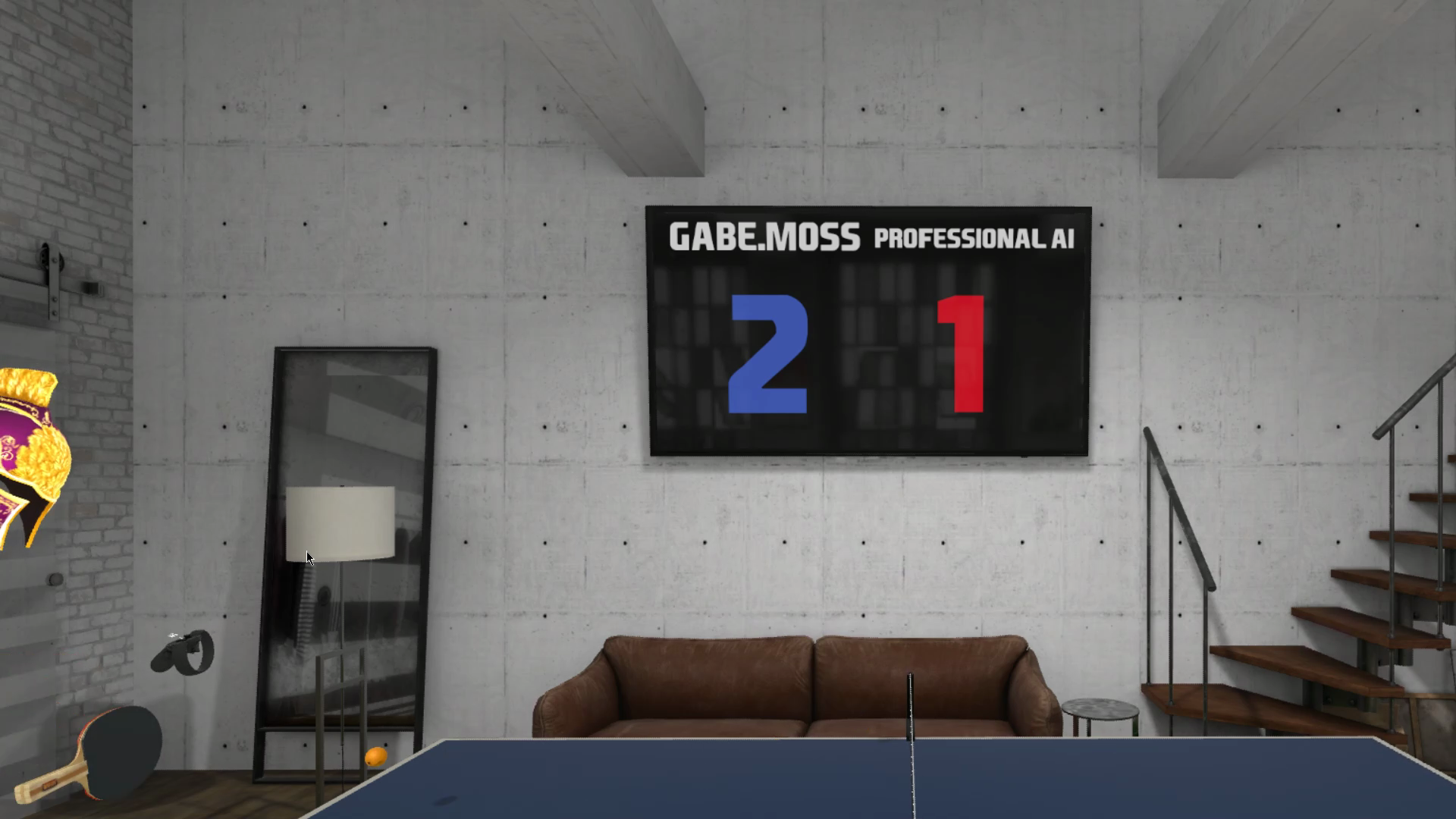
And each of them responds appropriately to your playstyle in relation to the difficulty setting. If you’re an amateur player, you will always feel challenged while playing against the Amateur AI. Or you can go online and play against a real person, and there are almost always other people online to share a lobby with you.
Since it isn’t so much an aggressive VR game, you’ll also find that other players really only want to have fun and let off steam in a comfortable environment. That pacing has lead to some pretty memorable interactions for me.
Once, while matchmaking, I stumbled into a group of people taking turns at a house party. What started as a round of serious Ranked matches ended up devolving into a dance-off, which was only subdued by the game’s minimal character representations; other players and AI bots are represented by disembodied floating headsets (or helmets, of which a selection exists in the main menu).
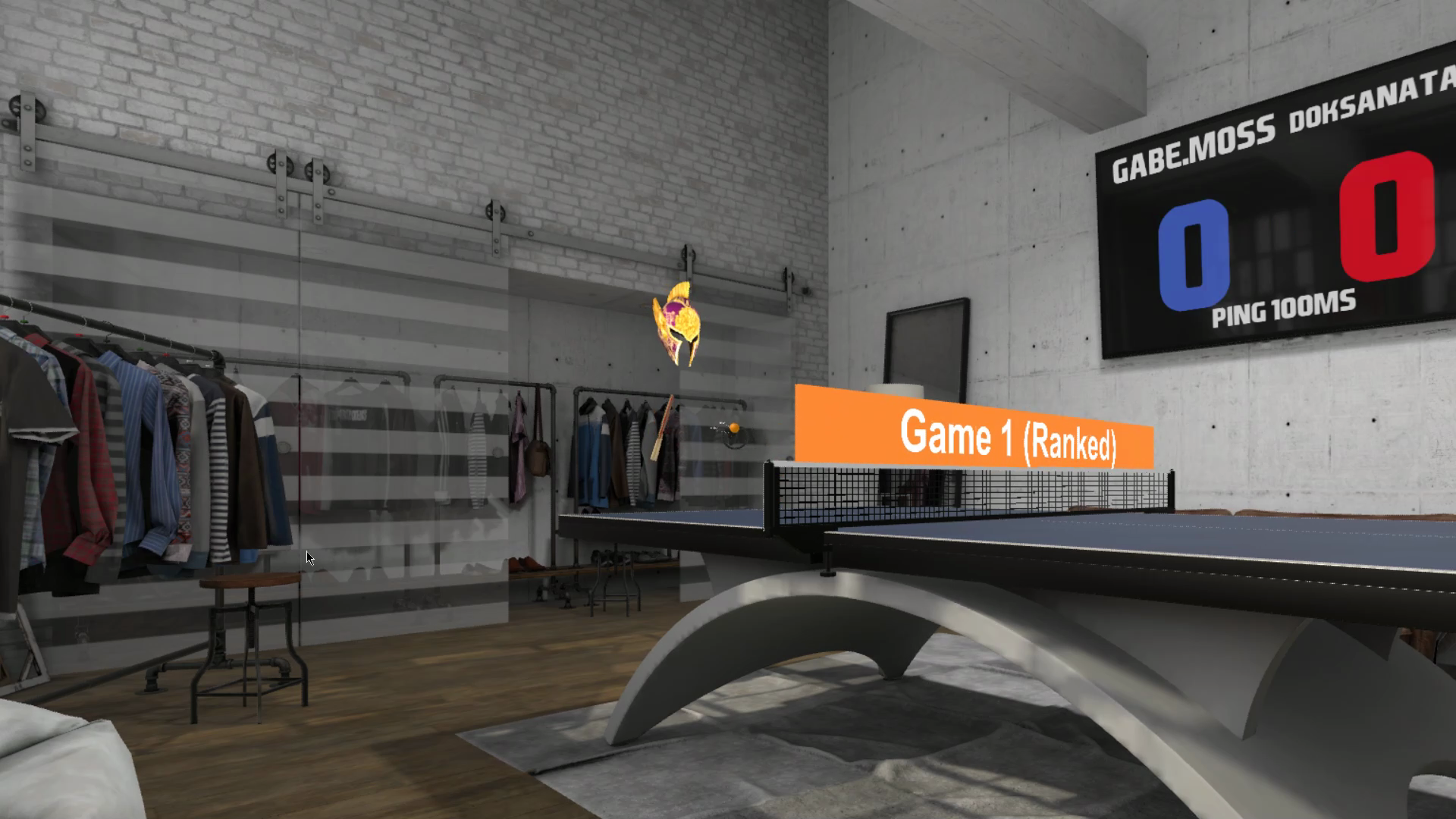
Conclusion
You’ve been struggling to keep up with your buddies at work, at the local pub, or anywhere else you might come face-to-face with a ping-pong table. You’ve suffered the embarrassment of awkwardly missing each of your serves. You may have gotten the jitters when the plastic ball came hurtling towards your face.
Now, you can put your fears to rest. You have a bonafide training program with Eleven: Table Tennis. You’ll build hand-eye coordination and muscle memory. Meanwhile, you’ll be getting a nice workout from the practice. There’s even 1v1 online multiplayer, which lets you hop into other player’s lobbies.
Most importantly, you’ll be able to use this app wherever you can set up an Oculus Rift or HTC Vive. Even if you don’t have friends to play with at home, you’ll always have an AI to practice with. And remember—the AI will never judge you. Show ‘em who’s boss!
Have you enhanced your table tennis skills in Eleven: Table Tennis? Let us know in the comments.

